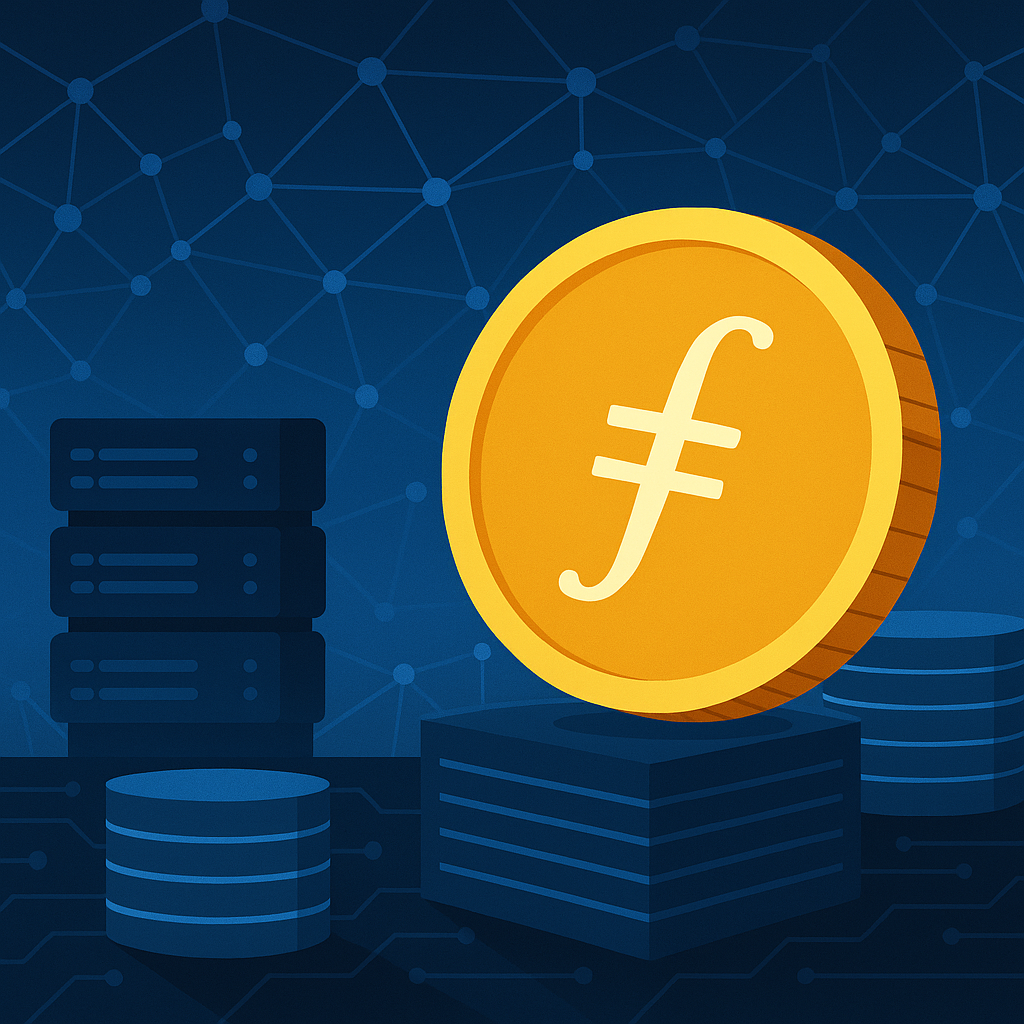1. What Is Filecoin?
Filecoin (FIL) is a decentralized storage network built on blockchain technology that allows users to store, retrieve, and manage data in a distributed way.
Instead of relying on centralized data centers like Amazon Web Services or Google Cloud, Filecoin connects users with storage providers around the world through a peer-to-peer marketplace.
The system is powered by the FIL token, which acts as both a payment mechanism and an incentive layer.
Storage providers earn FIL by renting out their unused disk space, while users pay FIL to store their files securely and verifiably.
Filecoin turns data storage into a decentralized economy — one that rewards transparency, security, and redundancy.
2. How Filecoin Works
Filecoin uses a combination of cryptographic proofs and incentive mechanisms to ensure that files are stored correctly and remain available over time.
🔹 Proof-of-Replication
Ensures that a storage provider has created a unique physical copy of the client’s data.
🔹 Proof-of-Spacetime
Verifies that the provider continues to store that data correctly for the agreed duration.
These proofs are recorded on-chain, making Filecoin auditable, trustless, and censorship-resistant — a key advantage over traditional cloud solutions.
3. Why Filecoin Matters in 2025
Filecoin’s relevance has grown significantly due to two converging trends:
- Explosive AI data growth, which demands massive, secure, and low-cost storage.
- The rise of decentralized infrastructure, which challenges the dominance of Big Tech clouds.
The network’s total capacity exceeds 10 exbibytes (EiB), and recent integrations — including with the Filecoin Virtual Machine (FVM) — allow developers to run smart contracts directly on top of the Filecoin blockchain.
This makes it possible to automate payments, deploy dApps, and even build decentralized AI data pipelines.
Filecoin isn’t just about storage anymore — it’s becoming a full Web3 compute layer for AI and data-driven applications.
4. Partnerships and Ecosystem Growth
Filecoin has built partnerships with major Web3 and AI players, including:
- OpenAI Data Commons – exploring decentralized data storage for training models.
- IPFS (InterPlanetary File System) – Filecoin’s backbone for distributed data exchange.
- Polygon & Chainlink – bridging ecosystems for on-chain verifiability and oracle access.
- FVM-based startups – building analytics, NFT storage, and decentralized archives.
As the AI + blockchain intersection expands, Filecoin is positioning itself as the infrastructure layer for secure, verifiable, large-scale data management.
5. FIL Token Utility
The FIL token underpins the network’s economy:
- Storage Payments: Clients use FIL to pay for data storage and retrieval.
- Staking & Collateral: Providers stake FIL as collateral to ensure reliability.
- Governance: FIL holders can vote on network upgrades and protocol changes.
- Market Incentives: New FIL is issued as block rewards to incentivize long-term participation.
As usage scales, demand for FIL correlates directly with real-world data volume — a rarity among crypto assets.
6. Risks and Challenges
Despite its progress, Filecoin faces several challenges:
- Competition from centralized storage providers (AWS, Google Cloud).
- Adoption barriers — technical complexity for smaller businesses.
- Volatility — FIL price remains speculative and cyclical.
Still, its focus on real utility and enterprise partnerships makes it one of the most sustainable Web3 infrastructure tokens in the market.
7. The Bottom Line
Filecoin represents the next generation of cloud storage — decentralized, verifiable, and censorship-resistant.
As AI systems demand ever-larger and cleaner datasets, Filecoin offers the infrastructure to store that data securely, transparently, and at scale.
In a world where data is the new oil, Filecoin might just be the decentralized refinery powering Web3 and AI together.







